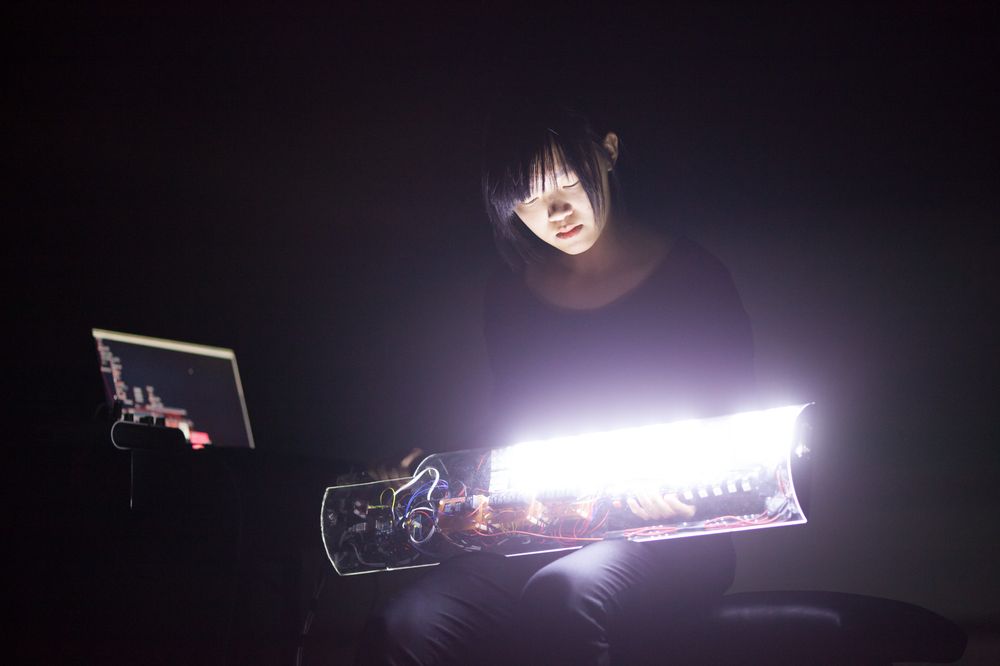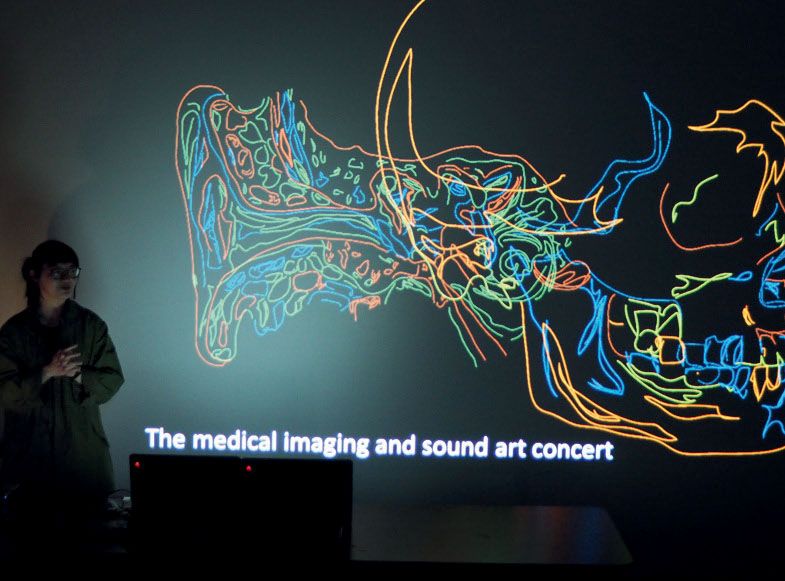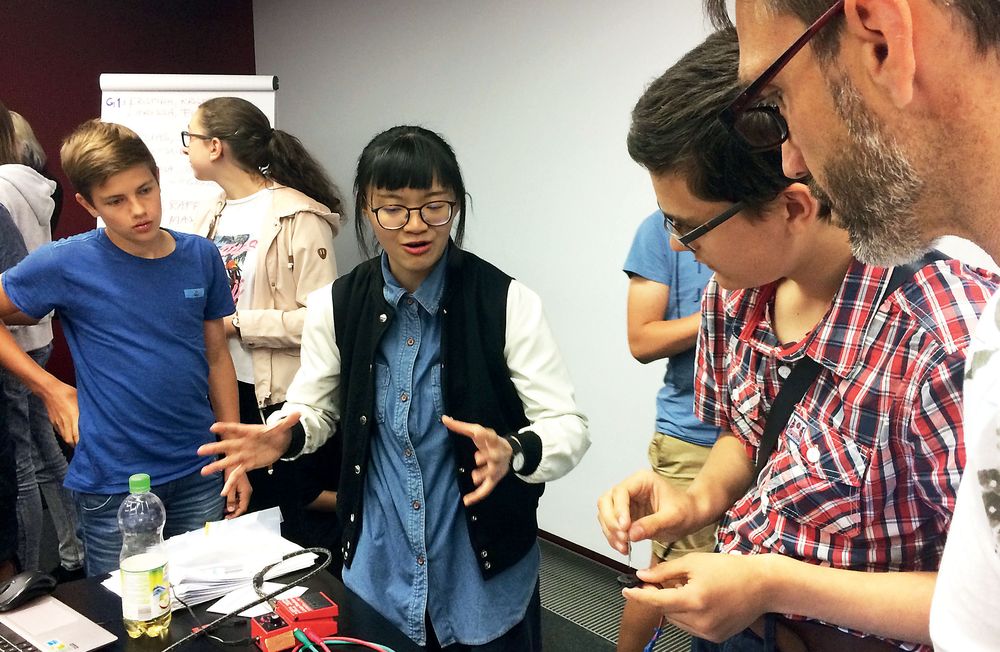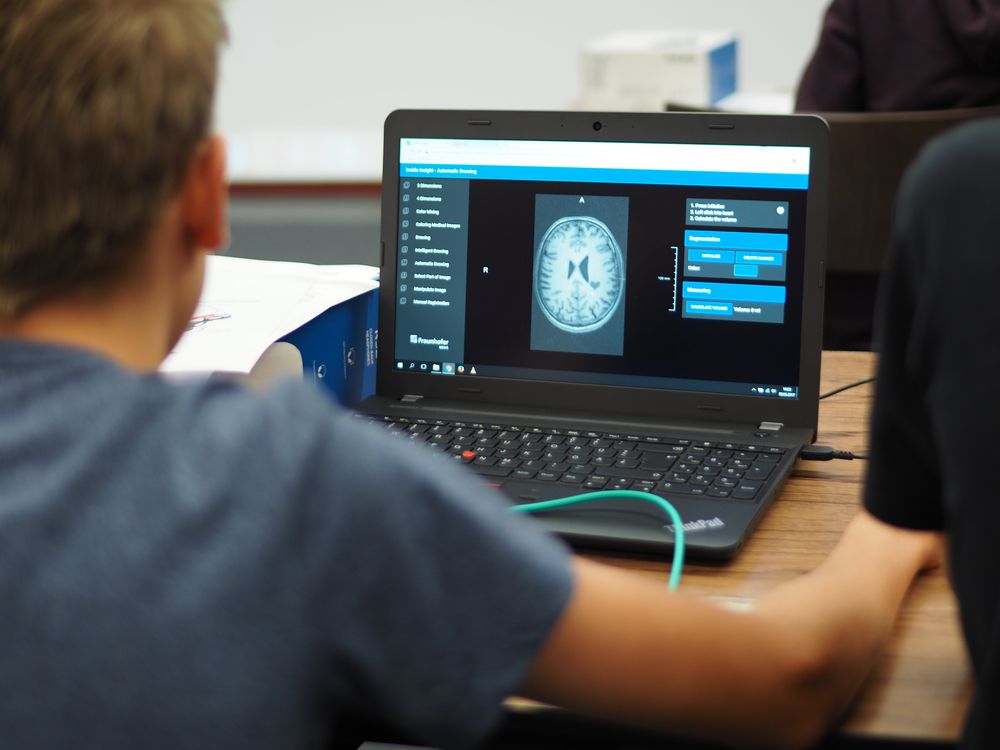ARS ELECTRONICA ARCHIVE - ART & SCIENCE
Das "European Digital Art and Science Network" basiert auf einem großen vielseitigen Netzwerk. Teil dieses Netzwerkes waren wissenschaftliche Forschungsinstitutionen (CERN, ESA, ESO, Fraunhofer MELVIS), das Ars Electronica Futurelab sowie die Projektpartner Center for the promotion of science (RS), DIG Gallery (SK), Zaragoza City of Knowledge Foundation (ES), Kapelica Gallery / Kersnikova (SI), GV Art (UK), Laboral (ES) und Science Gallery (IE). Von der EU gefördert lief das Projekt von 2014 – 2017.
Das Online Archiv der Ars Electronica bietet einen Überblick über die einzelnen Aktivitäten des Netzwerks und liefert zudem Informationen zum Netzwerk an sich, zu den Residency Künstlern und zu den beteiligten Projektpartnern und der Jury.
Artist Residency at Fraunhofer MEVIS 2017 - Yen Tzu Chang (TW)




An artist-in-residency program focusing on links between art and science
The Fraunhofer Institute for Medical Image Computing MEVIS has established an exciting artist-in-residency program that focuses on links between art and science. It is also integrating pupils into this experiment. Educators have been aware of the need to promote the STEM subjects Science, Technology, Engineering, and Mathematics for decades now, and measures have been prescribed for elementary school classroom instruction in order to ensure an early start and pave the way to an innovative society.
In the meantime, the acronym has acquired an additional letter. The “A” that now makes STEAM stands for Arts. Accordingly, Fraunhofer MEVIS has launched STEAM Imaging, which gives an artist the opportunity to spend a residency of several weeks working closely together with staff researchers at Fraunhofer MEVIS in Bremen, Germany, and co-developed and held a STEAM workshop for pupils. Then, she spent several weeks at Ars Electronica, Linz, which hosted another STEAM workshop. The artistic outcome of these encounters was presented at Ars Electronica Festival, September 2017 in Linz within the framework of the European Digital Art and Science Network.
Yen Tzu Chang (TW), the recipient of the residency STEAM Imaging, jointly hosted by Fraunhofer Institute for Medical Image Computing (MEVIS) and Ars Electronica, had the unique opportunity to work closely together with the Institute’s research staff. The Taiwanese media artist, whose previous works have included experimental sound performances, specializes in creating customized electronic instruments. Yen Tzu Chang also agreed, together with the scientists, to lead workshops for pupils in the 7th to 9th grades in Bremen and Linz in cooperation with the International Fraunhofer Talent School Bremen in March and June 2017. Following her residency, the outcome of this encounter of art and science in the field of medical imaging, Whose scalpel, was featured at Ars Electronica Festival ARTIFICIAL INTELLIGENCE – The Other I in September 2017.
https://www.aec.at/artandscience/en/artists/yen-tzu-chang
(Source: The Practice of Art and Science, p. 51, 52)
The heart as one of the most important human organs—both from the perspective of biology or symbolism in the society is the focus of the surgery. The heart is an installation, which is built according to the performer’s real heart from MRI scans, but is larger than its actual size. It is printed out by a 3D printer and surrounded by aluminum structures. To make the heart installation like a musical instrument, the inner part of it is equipped with Arduino, LED, and electronic components and the surface is covered with silicon and transparent vessels. It is designed to interact when the performer plugs in audio cables and bridges connections, similar to the method of coronary artery bypass surgery. Coronary artery bypass surgery is a type of heart surgery used for treating coronary artery disease, caused by the inner wall of arteries becoming blocked by fat. To supply enough oxygenated blood to the heart muscle, the doctor takes the blood vessels (or grafts) from the patient's leg, chest, or wrist and places it above and below the end of the blocked area so that the blood can go through the new grafts to reach the heart muscle.2 This method enables blood to flow through the new path, and it is a similar approach with operating a modular synthesizer to some extent, which is about letting the signal go through one modular to the other to produce the sound. In the heart installation, plugging in the cables, as a similar act, triggers the sound from Pure Data.
The AI is another character in the performance. It is created according to the technology trend. Since Alan Turing, an English computer scientist, submitted his article “Computing Machinery and Intelligence,”3 a new era began and the question: “Can machines think?” was raised. One large topic in artificial intelligence is machine learning, which, according to American pioneer Arthur Samuel means, “giving computers the ability to learn without being explicitly programmed”.4 The theory of it is, by designing algorithms to analyze portions of data, insights may be discovered and predictions may be made. Machine learning has been applied in many fields. In the medical field, machine learning is applied in diagnosis. According to Fraunhofer’s 2016 press publication, it can help physicians to distinguish tumors from CT and MRI scans.5
In the performance, an artistically imagined AI will be in charge of more important medical tasks such as analyzing the patient’s body condition and giving doctors suggestions with sound and visuals in future surgery. The storyline is led by the sound and the mixed video of medical images and live performance from the webcam. The goal of the performer as a surgeon during surgery is to cure the heart, which symbolizes human consciousness and faith. The AI, which is regarded as a perfect model, gives instruction to the performer. Maybe the question “If machines can reason even better than humans, will we as humans lose some abilities and not even believe ourselves anymore?” is worth thinking about since the issue is already present.
1 Christian Hansen, David Black, Christoph Lange, Fabian Rieber, Wolfram Lamadé, Marchello Donati, Karl J. Oldhafer, and Horst K. Hahn. Auditory guidance prototype for navigated liver surgery. Computer Support for Image-Based Medicine, Fraunhofer Institute for Medical Image Computing MEVIS. URL: https://youtu.be/gCg5nJSI2pY [accessed 2017-02-07].
2 Johns Hopkins Medicine, Health Library, Coronary Artery Bypass Graft Surgery. URL: http://www.hopkinsmedicine.org/healthlibrary/test_procedures/cardiovascular/ coronary_artery_bypass_graft_surgery_cabg_92,P07967/ [accessed 2017-07-02].
3 Turing, Alan M. “Computing machinery and intelligence.” Mind 59.236 (1950): 433-460.
4 Munoz, Andres. “Machine Learning and Optimization.” URL: https://www. cims. nyu. edu/~ munoz/files/ml_optimization. Pdf [accessed 2016-03-02][WebCite Cache ID 6fiLfZvnG] (2014).
5 Fraunhofer. Machine learning to help physicians. URL: https://www.fraunhofer.de/en/press/ research-news/2016/november/machine-learning-to-help-physicians.html [accessed 2017-07-02].
(Source: The Practice of Art and Science, p. 53-55)

